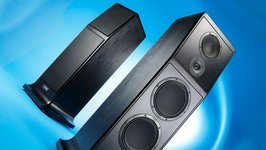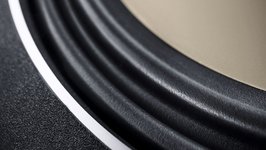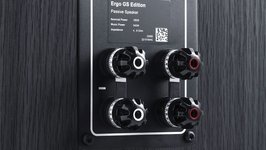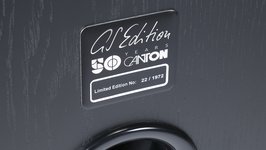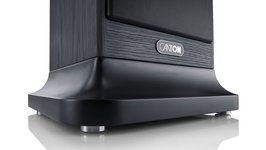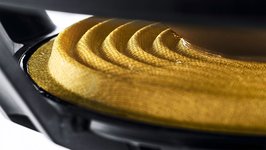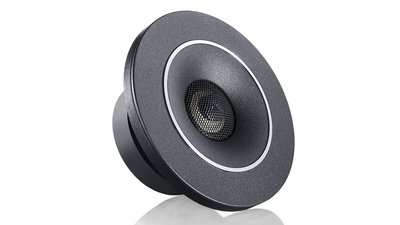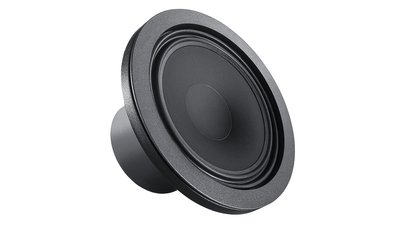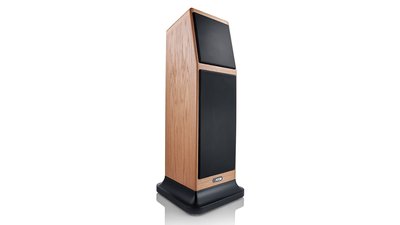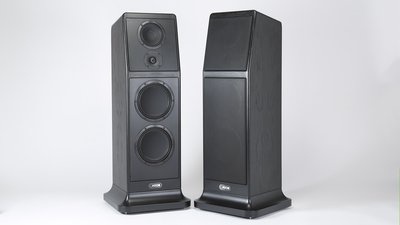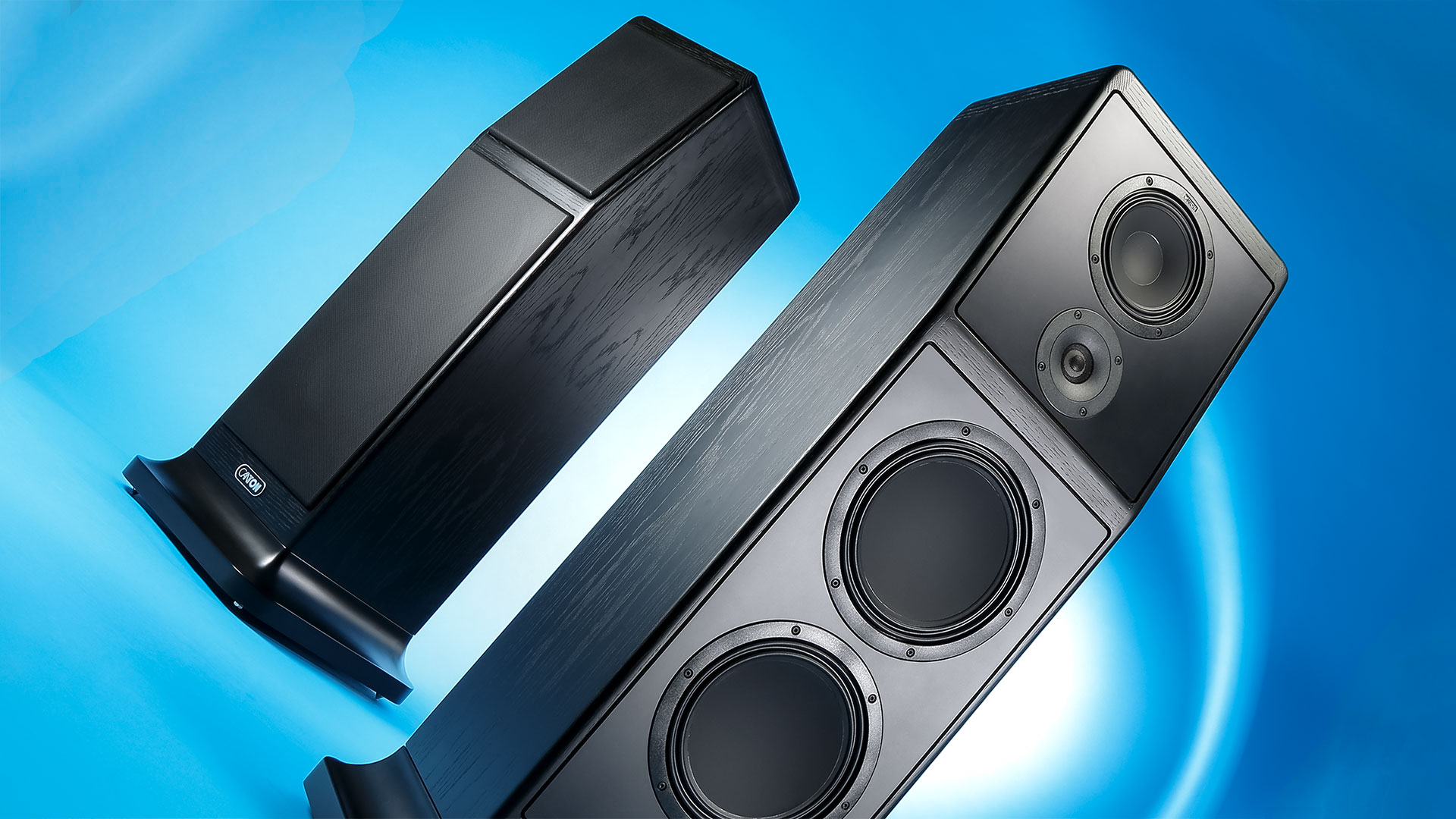
Floorstanding speaker test
Canton Ergo GS Review
Anniversary Highlight – In 1979, Canton‘s Ergo speakers were a milestone for the then young company. Perfectly shaped and excellent in sound, it also became a timeless bestseller and a living classic. This speaker still performs marvelously, even today. Especially when it is upgraded with Reference K technology for the company‘s anniversary.
The first floorstanding loudspeakers in the company‘s history came at a height of around a meter, which seems perfect for the modern living room of the 2020s as well. In the "GS Edition" – a tribute to company founder Günther Seitz –, available in black oak or light oak, this visually quite distinctive speaker is strictly limited to 50 pairs. Thus, it undoubtedly will become a coveted collector‘s item and – yes – an absolute fan favorite.
7,000 euros per pair is the price of this gem. For all its history, Canton is by no means copying itself here, a bit at most.
Modern Reincarnation
Obviously, we went down into our archives. And indeed, I was able to find an early review of an active Ergo model, albeit from the competition; namely in the test yearbook HiFi Stereophonie 82/83. The speaker was described as a "relatively slim, beatuifully shaped and impeccably manufactured three-way active speaker ... capable of producing a remarkably voluminous, not discolored and transparent sound image" and put into the highest league.
Exactly at that time I was thirteen years old and looking for speakers. I also had the Canton GLE 70 in mind, which is related to the Ergo. But that‘s just a side-note.
Judging by the looks and in terms of dimensions, you might think that you‘re standing in front of an edition of the original Ergo series. In fact, however, it quickly becomes clear at second glance that this is one of the most modern and also on of the best Canton speakers of all time. Among other things, this is due to the exclusive driver assembly. The tungsten-ceramic technology of the Reference K series was indeed the basis, but with further refinements in detail and made more exclusive.
One of the changes: the membranes intended for the Ergo GS are allowed to remain longer in the process bath during the already very complex and time-consuming manufacturing process. Aluminum is turned into ceramic via oxidation in this procedure.
The exceptional drivers are acoustically refined by tungsten particles like the Reference drivers, but also colored black by means of further additives. In the Canton portfolio, these drivers are available exclusively in the GS Edition, at least for now.
Of course, the latest reincarnation of the Ergo includes virtually all breakthroughs of Canton R&D – and that‘s quite a lot. For example the advanced, generously sized design of the drivers, including the powerful motors. The extremely stable and stiffened housing with its characteristic stand, which almost "anchors" the housing to the floor is also certainly worth mentioning.
Furthermore, the durable and perfectly guiding „Wave surrounds“, developed in-house, are employed here, as are the double membranes. These are part of the 20cm ceramic woofers, which basically come from the Canton Reference 3K (reviewed by us here). Together with the particularly clever membrane geometry of the ceramic midrange driver for low-resonance and stiff movement, this all comes very close to the ideal of the „perfectly oscillating piston“. The basis for this 20cm driver comes from the Reference 8K, i.e. the flagship.
Proven Long-Time Favorite
Canton fans will probably be most familiar with the tried and tested 25mm dome tweeter. It began its life several generations ago as an aluminum model and was constantly improved until it became a ceramic top driver, and today it is hard to imagine a premium Canton without it. Another feature that is typical for the speakers from Weilrod.
The crossover is sophisticated and superbly equipped to assign the drivers their perfectly staked "claim", i.e. their respective ideal operating range. The upper section of the Ergo is reserved for the mid and high ranges and is completely separated. In addition, the angled baffle ensures an optimized dispersion, which even aims slightly upwards. It comes in the original standing desk design from 1979, which, by the way, goes back to the then very famous design professor Fischer. The soundstage that can also be perceived above the speakers – with localization of the voice of the respective protagonist at the ideal height of about 1.80 meters – might also have its origin there.
By the way: The very slight time delay correction, which was desired back then and achieved via the angle of the upper part of the housing, is omitted nowadays. As in other Canton speakers, the modern midrange driver and tweeter have swapped places for the purpose of optimizing the radiation behavior and interaction in the crossover area. The group delay is therefore also rather a task of the crossover. Even the high-class inner wiring stems from the Reference line, the terminal employs the latest WBT NextGen connectors. Excellent and expensive.
Bass Department
The lower, particularly generously designed part is its own bass reflex enclosure and is supposed to optimally support the two 20cm drivers and descend deep into the lowest bass regions. Unfortunately, our measurement reference to 1 kilohertz only depicts this unsatisfactorily. The membrane areas add up adequately to one larger woofer, but work faster. Canton specifies a transmission range of 20 to 40,000 Hertz. Below that, nothing works intentionally; no instrument reaches these frequencies anyway, i.e. no music transmission takes place anymore. This section is thus elegantly closed off, so to speak.
Canton‘s DC technology reliably prevents nonsensical and energy-wasting diaphragm movements in the infrasonic range, the home of rumble and interference coming from warped records. It is thus acting as a kind of electroacoustic subsonic filter in the speaker itself. Particularly vinyl record and possibly also tape fans might be very happy about this, especially since it objectively tightens and stabilizes the bass foundation and, according to Canton, also achieves an overall optimization.
In the midrange, the driver‘s natural acoustic roll-off of 12 dB/octave and the second-order crossover together form a quasi 24 dB filter. In the higher frequency range, -6 dB/octave plus 18 dB filter likewise, and in the bass a resulting filter of up to sixth order is achieved by the bandpass effect. All in all, the Link-Riley characteristic results in an extremely favorable transfer function in terms of radiation and group delay.
A Typical Canton
And can you hear that? Of course you can! As always, the Canton speakers are very dynamic, crisp and lively, which reliably reveals the signature of head developer Frank Göbl. The Ergo GS, belonging to the highest tier of the portfolio, naturally not only scores in terms of attack, temperament and maximum level, but also in the audiophile virtues of balance, fine resolution, spatiality and absence of fatigue.
Indeed, we do not miss any transparency, despite the fact that the Ergo, just like the other modern models, undoubtedly performs a bit more restrained and pleasant than speakers from decades ago, especially in the high frequencies. This could possibly also be credited to the really admirable ceramic dome tweeter, which is also responsible for the pronounced spaciousness and level of detail.
In medias res
The performance of the retro-modern Canton is absolutely captivating. The bass, for instance, creaks, is well-contoured and fast, yet voluminous and very pleasantly rounded. In our STEREO listening room, its physical power was tangible, as it reaches astonishingly deep for a speaker of this still for many "reasonable size" and literally makes everything shake – if it is supposed to, anyway. And with AC/DC it certainly is, without a doubt.
We listen our way through a small CD tower; and a lot of fun is being had! Yello with "Oh Yeah", for example, blasts us with spatial effects, the most delicate sounds and ultra-deep bass in unique arrangements via the Canton; Adele enchants us live at the Royal Albert Hall with temperamental interjections and a cover song of Bonnie Raitt that could easily become a new favorite song via the Ergo: "I Can‘t Make You Love Me". Stunning!
At the same time, the massive 34 kilogram column from the Taunus region controls not only the loud parts masterfully, but also the delicate and subtle tones. The pianissimi as well as the well-staggered sounds of a large orchestra in classical music. In the opinion of the venerable HiFi Stereophonie magazine from back in the day, the old Ergo seemed as if made for this. Even if the Maestro Carlo Maria Giulini could not have known these loudspeakers: he would have liked them, as they suit his temperament.
Looking into the Future
According to Frank Göbl, the details of the Ergo‘s modernization are supposed to become trend-setters for future developments. We are looking forward to that, and not only because of the black speaker drivers.
The Ergo GS Edition is more than "just" a tribute to its ancestor. In this form, it is a modern, very powerful and exemplary universal speaker. One that, with its unmistakable retro look, would not in any way have to hide from its Reference siblings or other audiophile to high-end speakers from the competition. Quite the contrary. Here‘s to the next 50 years!
Verdict
Anniversary speakers in retro real wood housing limited to 50 pairs. Very dynamic and robust as well as well-balanced and audiophile performance with Canton-typical enormous level capabilities, impressively spacious and finely detailed.
Technical Details
Floorstanding speakers (passive)
Canton Ergo GS Edition
Price: ca. 7000 € (Last check: 16.12.2022)
Dimensions WxHxD: 40 x 103 x 40 cm
Weight: 34 kg
Warranty: 5 years
Manufacturer: Canton
General Data
Measurement Results
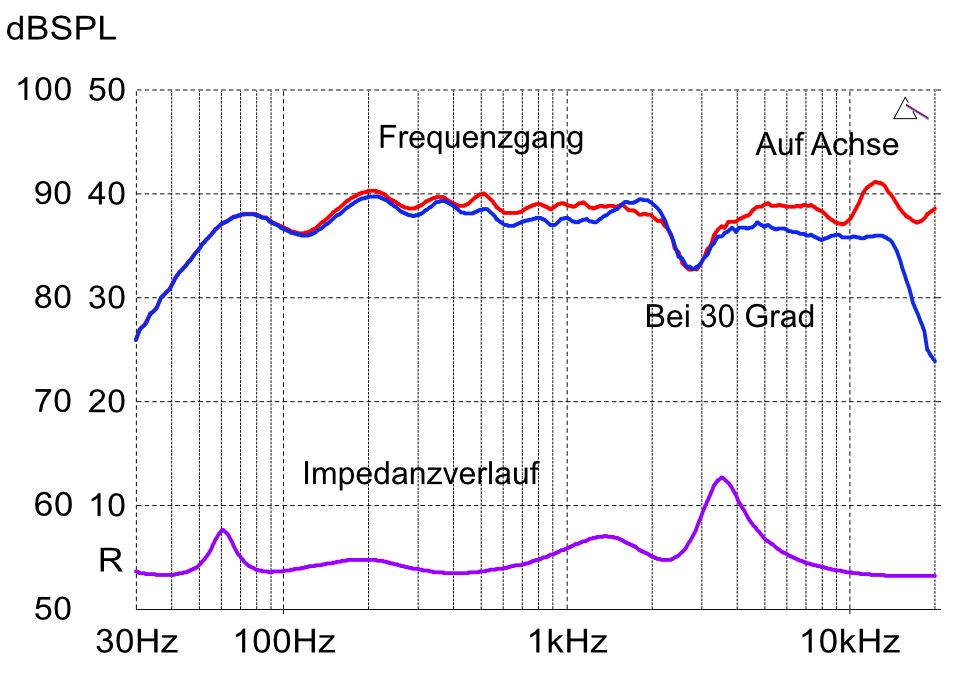
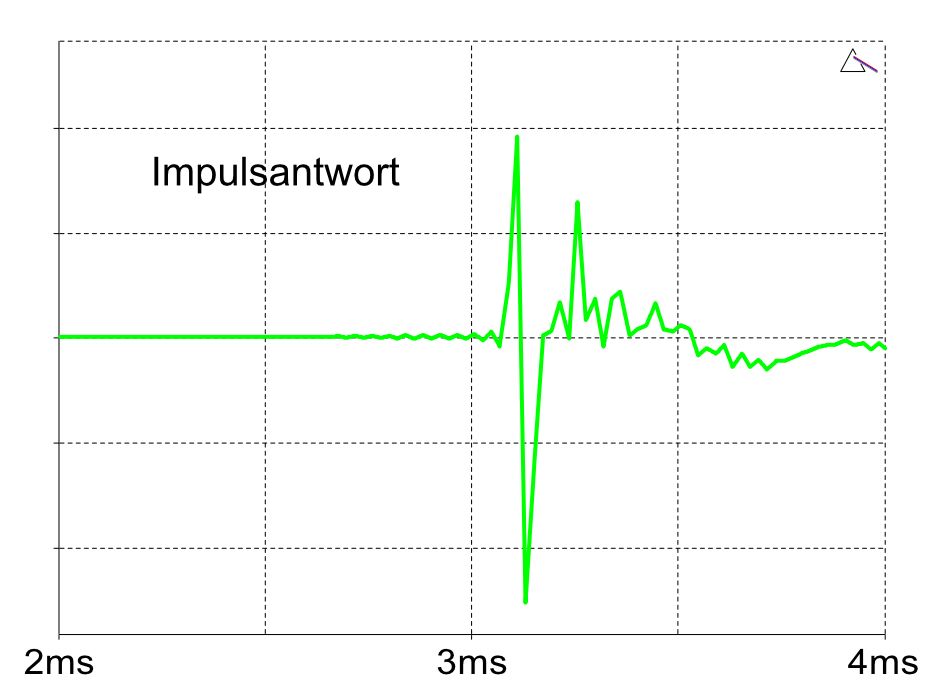
Measurement Values
| Rated impedance at DC: | 4 Ohm |
| Minimum impedance: | 3.49 Ohm |
| Minimum impedance at: | 37 Hz |
| Maximum impedance: | 12.76 Ohm |
| Maximum impedance at: | 3364 Hz |
| Sound pressure characteristic (2.83 V/m): | 89 dBSPL |
| Power for 94 dBSPL: | 6.22 W |
| Lower cut-off frequency (-3dBSPL): | 50 Hz |
| Distortion factor at 63/3k/10k Hz: | 0.35/0.12/0.16 % |
Stereo Test
Sound Level Floorstanding speaker: 88%
Price/Performance
Lab Comment
Except for a dip at about 2900 Hertz, linear frequency response without significant abaxial drop. Quite high efficiency relative to 1 kHz, 50 hertz low frequency response (-3 dB), significantly lower in reality. Good impedance, good impulse response shows resonances, very low distortion.
Features
Three-way design with bass reflex support, stand, metal protection grille, real wood cabinet in black oak or light oak
Test Devices
Turntable:
Clearaudio Ovation
CD Player:
T+A MP 2000R
Integrated Amp:
Audionet WATT
Loudspeakers:
DALI Epicon 6
Cables:
AudioQuest, HMS, Supra
What We‘ve Heard
Various Artists: Canton Reference Check No.1
At this point, Canton‘s own top-reference-recording of course has to be mentioned. Listening tip: Carolin No.
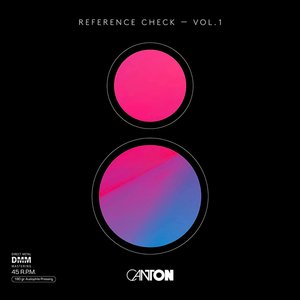
AC/DC: Highway To Hell
Ther can‘t be a Canton review without AC/DC. Listening tip: Highway To Hell.

 MAGAZINE
MAGAZINE